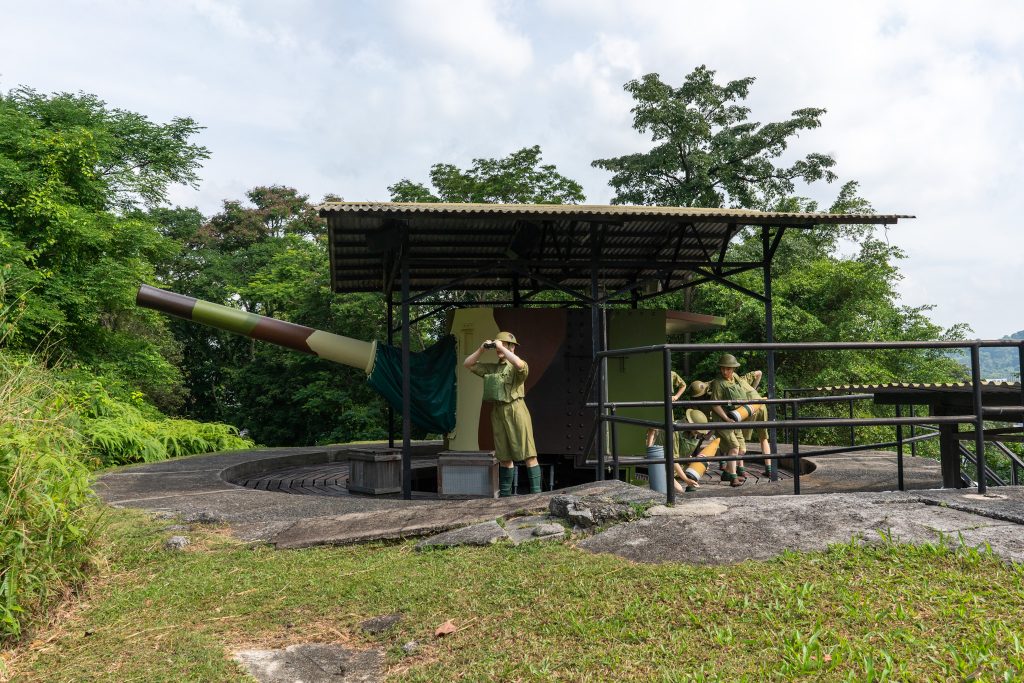
Fort Siloso, Singapore’s best-preserved 19th-century fort, was gazetted as a National Monument on February 15,2022, fortifying its place in Singapore’s built heritage.
The historic site that stands as a testament to Singapore’s war years and rich military history will be accorded the highest level of protection, with 11 fort structures that collectively tell Singapore’s defence story. This marks the first time that a site with structures is gazetted as a National Monument.
In commemoration of its role in the Battle for Singapore which marks its 80th anniversary this year, Fort Siloso was officially gazetted on Total Defence Day (15 February). The National Heritage Board (NHB) made known its intention to gazette Fort Siloso on 17 January 2022.
The site was accorded immediate protection as a proposed National Monument, following the amendments to the Preservation of Monuments Act in 2021. NHB then engaged with key heritage stakeholders and also welcomed public feedback on the proposed monument. As a gazetted monument, Fort Siloso will continue to serve as a social and community space enjoyed by Singaporeans, as well as a tourist attraction.
Ms Jean Wee, Director of the Preservation of Sites and Monuments division, NHB, said: “The gazette of Fort Siloso as our 74th National Monument gives pause to the fact that on this day, 80 years ago, Singapore fell to adversarial forces. The Fort is symbolic of every effort we take as citizens in defending our Nation. Following the amendments to the Preservation of Monuments Act, 11 structures, on the almost 7-ha site, that contribute to the defence function of the Fort will be collectively gazetted.
Mr Michael Ma, Assistant Chief Executive, Sentosa Development Corporation (SDC), which manages Fort Siloso, said: “The gazetting of Fort Siloso not only illustrates the rich history and heritage that Sentosa is home to, but is also significant as it takes place in the 50th anniversary since the establishment of SDC and Sentosa as a leisure destination in 1972. We invite Singaporeans to revisit Fort Siloso’s fortifications and historic coastal guns, and better understand Sentosa’s storied past as a naval stronghold, as we mark our Golden Jubilee as a multi-faceted leisure destination this year.”
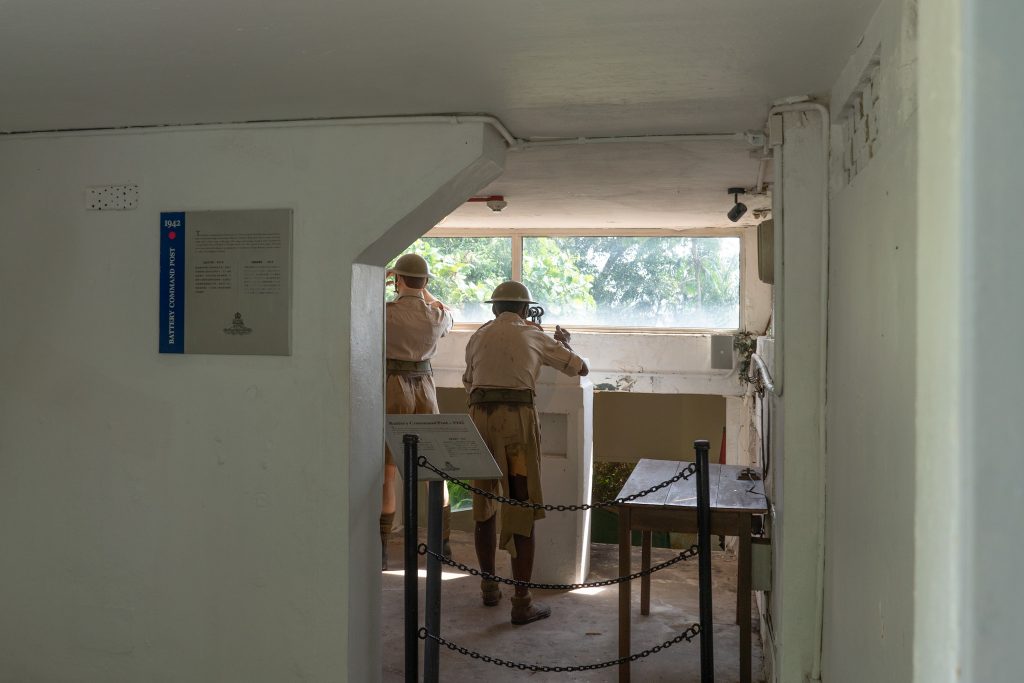
Safeguarding Singapore’s military heritage
Constructed in 1878 as part of a set of strategic coastal fortifications in the context of Singapore’s growing importance as a trading port in the late 19th century, Fort Siloso illustrates Singapore’s military history from its time as a Crown Colony to the post-World War II period.
The Fort’s strategic location on the western tip of Pulau Blakang Mati (Sentosa today) allowed it to guard the narrow western entrance to Singapore’s “New Harbour” (Keppel Harbour today) and defend the country from foreign invasions from the sea.
During the Battle for Singapore (8 – 15 February 1942), Fort Siloso played a critical role in the nation’s defence as one of the two known busiest batteries on Pulau Blakang Mati. When Japanese troops were deterred by the seaward fortifications and invaded Singapore by land from north Malaya, Fort Siloso’s guns were turned towards the mainland instead to help support the ground forces defending Singapore from the invasion.
Its guns also destroyed the oil refineries at nearby Pulau Bukom and Pulau Sebarok to prevent the Japanese from using them. The Fort also served as a Prisoner-of-War camp for Australian and British soldiers during the Japanese Occupation, and later for Japanese soldiers after their surrender.
Singapore’s defence story continued during the Konfrontasi period (1963 – 1966), where the 10th Gurkha Rifles Unit manned the Fort to prevent Indonesian saboteurs from landing on Pulau Blakang Mati and Keppel Harbour.
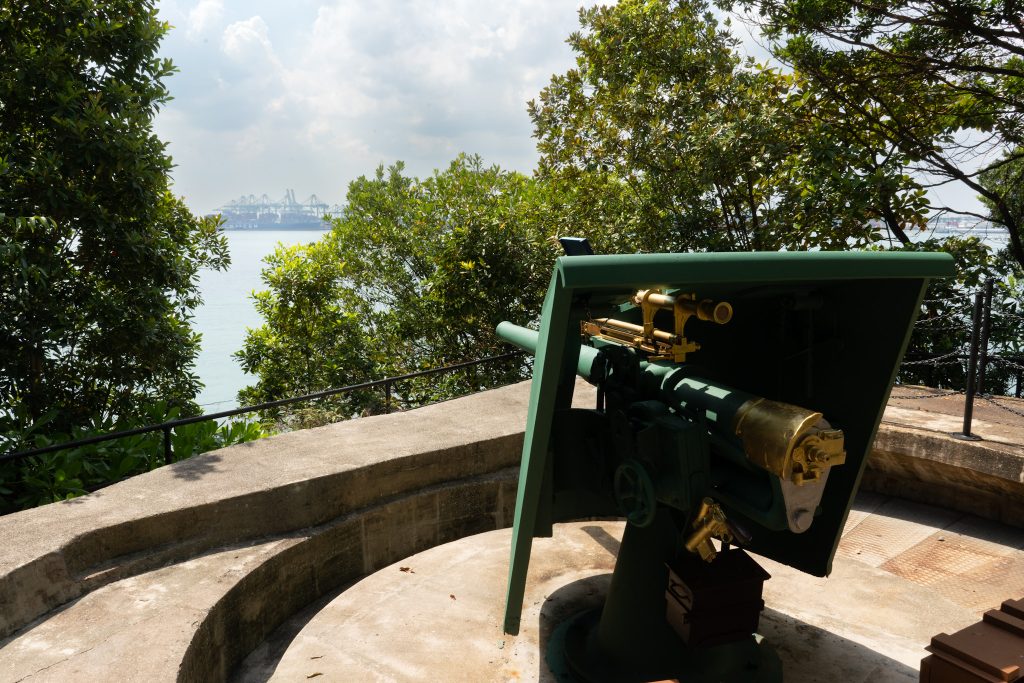
Historic collection of coastal artillery fort architecture
Today, 80 years after the Fall of Singapore, Fort Siloso stands as a beloved historical site and home to a wealth of World War II memorabilia, including coastal guns and a collection of fortified military structures and tunnels.
The Fort’s layout of seemingly sporadic gun emplacements belies a carefully calculated defence strategy, with guns of sufficient overlapping arcs of fire and supporting structures scattered around the Fort for practical considerations such as line of sight and proximity to guns. As a live defence site, the Fort was upgraded several times and at times damaged – by enemy attack or deliberately as part of the defence strategy.
In a collective telling of Singapore’s defence story, the site includes 11 gazetted structures consisting original Casemates of an early-19th century design; four Gun Emplacements; three Tunnel complexes that functioned as underground magazines directly beneath the guns, illustrating advances in military design in the late 19th-century; key defensive structures such as the Battery Command Post and the Fire Director Tower with Searchlight Posts; and the former Sergeants’ Mess and Officers’ Mess which provide a picture of how soldiers lived in a fort.
Collectively, these coastal artillery fort architecture structures comprehensively illustrate Singapore’s defence story, from its early significance as a colonial trading post that needed to be well secured, through to the fall of Singapore to the Japanese, its merger with Malaya and the Konfrontasi period, as well as the Fort’s present use as an on-site military museum.
Fort Siloso’s national, historical and architectural merits
Fort Siloso is the best-preserved 19th-century fort in Singapore and bears an important testament to Singapore’s rich military heritage. Constructed in 1878, it was part of a set of strategic coastal fortifications set up in the context of Singapore’s growing importance as a trading port in the late 19th century.
Fort Siloso played an important role in the Battle for Singapore (8 – 15 February 1942) as one of the two known busiest batteries on Pulau Blakang Mati (now Sentosa; the other being Fort Connaught). It served as a Prisoner-of-War camp during and after the Japanese Occupation (first for British and Australian POWs, and then for the Japanese POWs).
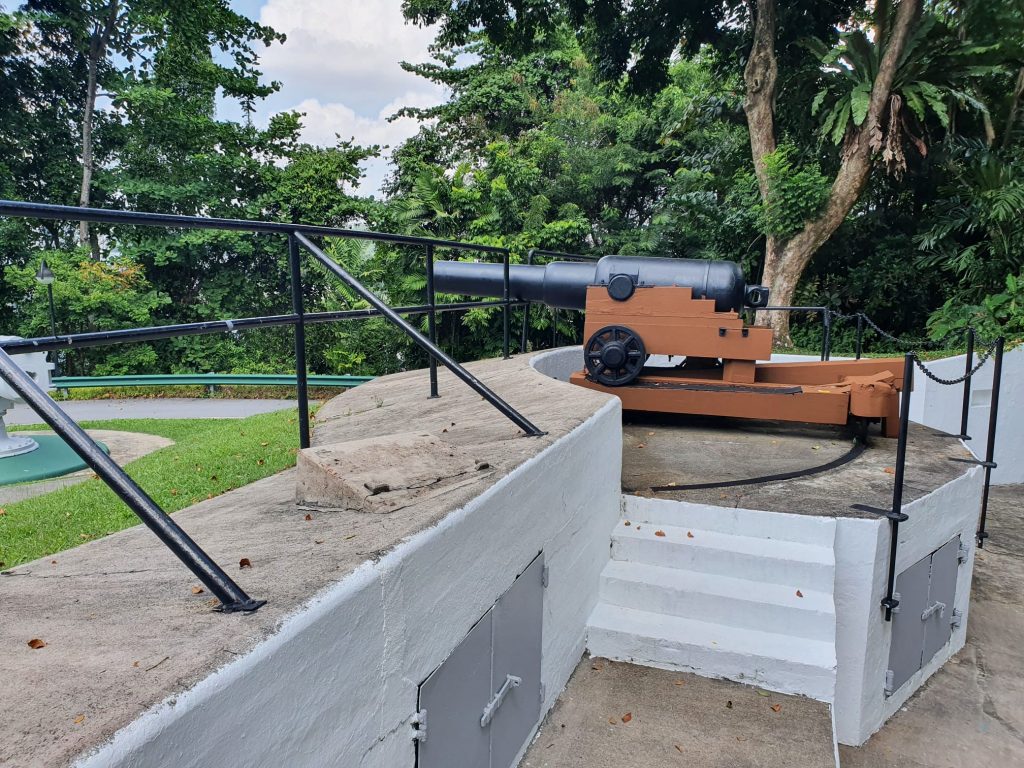
Historical Interest
Fort Siloso1 was one of the five forts commissioned in 1878 as part of a large-scale extension of Singapore’s defences. The Fort was part of Singapore’s coastal defence system on Pulau Blakang Mati and was set up to defend Singapore’s “New Harbour” (Keppel Harbour today), to protect Singapore’s trade and to defend the country from foreign invasions from the sea.
The Fort’s strategic location on the western tip of the island allowed it to guard the narrow western entrance to Keppel Harbour. In general, the guns installed on Pulau Blakang Mati were naval and coast defence guns, as the primary objective of the forts was to counter attacks from the sea.
Roles during World War II
During the Battle for Singapore, the coastal defences of Pulau Blakang Mati, including Fort Siloso, apparently helped to deter a Japanese seaborne invasion from the south. Colonel Masonobu Tsuji, who planned Japan’s invasion of Singapore, assessed that a seaborne attack was not possible due to the seaward fortifications. As a result, the Japanese attack came from the north instead, which lacked permanent defences.
When the attack came from the north, the guns of Pulau Blakang Mati were turned landward after receiving orders to engage the invading troops. From 11 February 1942, the guns of Fort Siloso engaged enemies at the west end of West Coast Road and at Jurong River. On 13 February 1942, Fort Siloso, together with Labrador Battery, provided the 1st Malay Infantry Brigade with support fire, which enabled the Brigade to withstand attacks from the Japanese Imperial Guards Division.
Its guns also destroyed the oil refineries at nearby Pulau Bukom and Pulau Sebarok to prevent the Japanese from using them. The battery at Fort Siloso was the first to be deliberately destroyed by the British themselves at 5am on 14 February 1942, when false reports of the Japanese landing came in.
During the Japanese Occupation, Fort Siloso was a Prisoner-of-War camp for Australian and British soldiers. After the surrender of the Japanese, the Fort became a Prisoner-of-War camp for the Japanese.
During Konfrontasi
During the Konfrontasi period (1963 – 1966), the 10th Gurkha Rifles Unit manned the Fort to prevent Indonesian saboteurs from landing on Pulau Blakang Mati and Keppel Harbour.
Present Use
Pulau Blakang Mati was returned to the Singapore government after the British military withdrew from Singapore in 1967. The island was renamed “Sentosa” and re-branded as a tourist destination in the 1970s. Fort Siloso was opened as an on-site military museum on 8 February 1975.
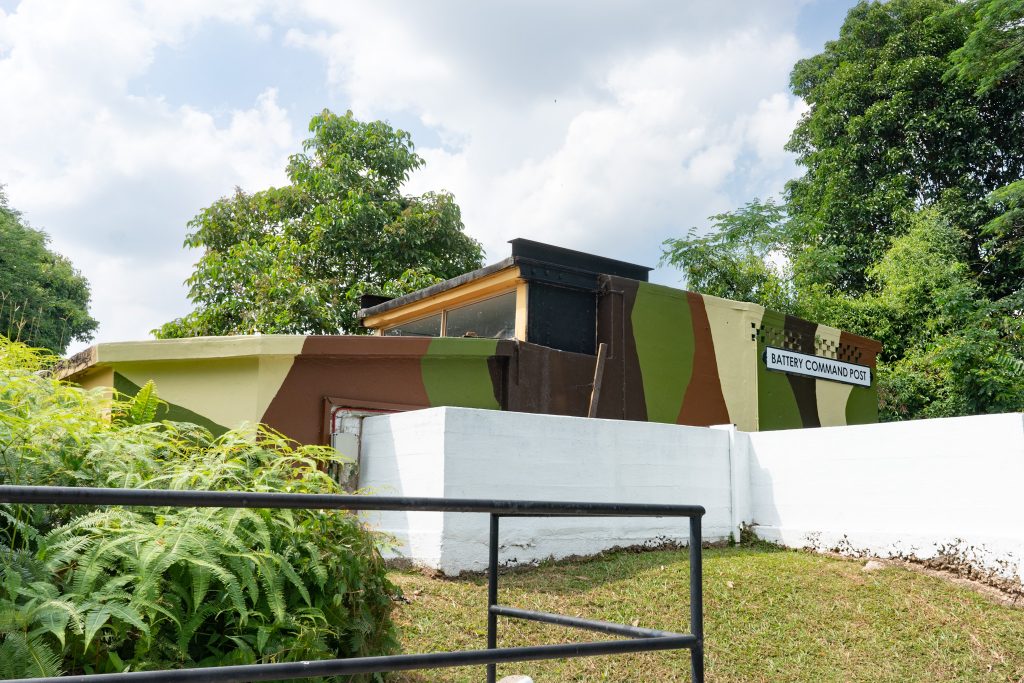
Architectural Interest
Fort Siloso is one of the few remaining intact examples around the world of 19th-century open artillery battery design. Designed by Henry Edward McCallum, colonial engineer of the Straits Settlements, this was an innovative concept in its time, featuring seemingly sporadic gun placements and underground structures.
Fort Siloso features such “random” gun emplacements (placed not for geometry or aesthetics but for strategic firing) and underground structures, built beneath earth ramparts such that it would be difficult for enemies to engage with them.
The Fort can be described as discreet, with a layout that is not easily discernible by the enemy.
First commissioned in 1878, Fort Siloso has seen major alterations to its layout and architecture as early as a few years after its completion up till to the 1940s, in response to changing needs. The Fort thus contains a unique collection of coastal artillery fort architecture structures from the late 19th century to World War II.
At Siloso Point, an anti-motor torpedo boat (AMTB) emplacement with a 12-Pounder Quick-Firing gun, named OSO Battery, was constructed to combat fast-moving small vessels from raiding Keppel Harbour from the west.
Improvement works included addition of a three-storey fire director tower, machine guns, searchlights and observation posts to monitor the straits and coordinate artillery fire. The Fort’s underground infrastructure housed magazines, tunnels and a powerhouse that provided electricity for the Fort and submarine electro-contact and ground mines laid off the northern coast.
11 gazetted Fort structures
1 7-inch Rifled Muzzle-Loading (RML) Gun Emplacement with Shell and Cartridge Store
This gun emplacement dates back to 1878 and is still intact today. It had shell and cartridges stores underground. Bomb damage due to air attacks during
WWII was visible at the emplacement, though the damage was subsequently restored in the 1990s.
2 6-inch Quick-Firing (QF) Mark II Gun Emplacement
The “6-inch QF Mark II Gun Emplacement” is found above “Tunnel C Complex”. There were two gun emplacements that held two 6-inch QF guns before
they were moved. Shells would be sent up the hoist from the tunnel to a hatch.
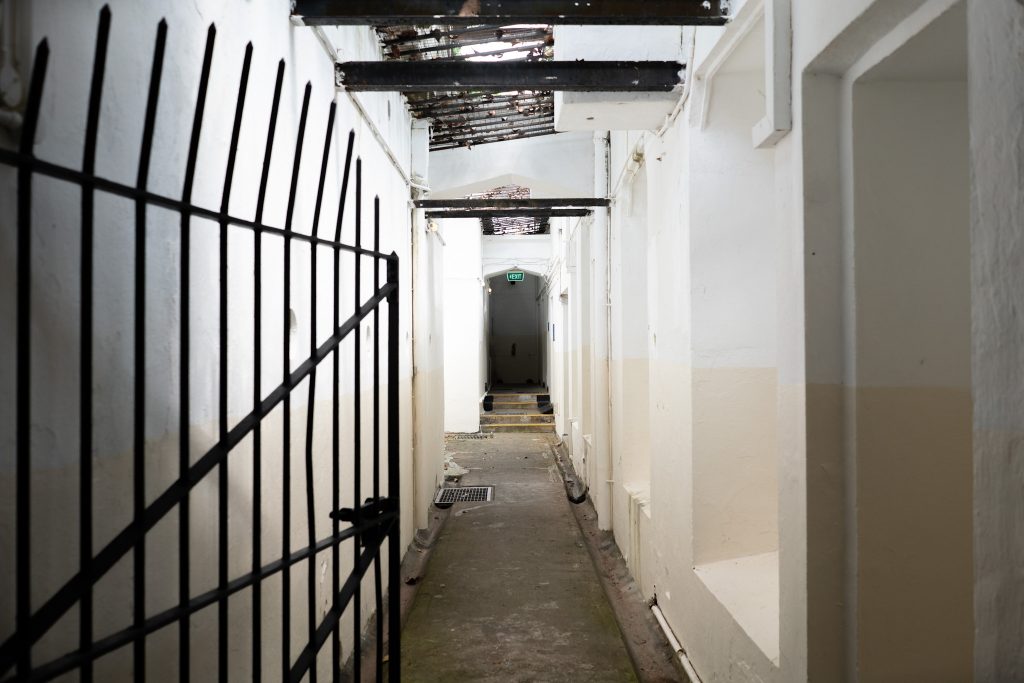
3 Tunnel C Complex
“Tunnel C Complex” was a magazine which served both gun emplacements above ground. A magazine is an underground structure which stores shells and cartridges for military use, and in this instance they were sent up to the guns above via the two ammunition hoists.
4 Battery Command Post
The Battery Command Post was where the Battery Commander was located. The post had a clear view of the oil installations on Pulau Bukom and the western sea
lanes into the Harbour. In 1896, there was only an Observation Post but it was later expanded. By 1912, a two-storey Battery Command Post was completed.
5 Casemates
These casemates were strong underground chambers built to provide accommodation, office and storage space. They were designed to be shellproof and faced away from the sea to protect it from hostile naval firing.
Each room of the casemates at Fort Siloso had a specific use, and would vary throughout the Fort’s active life. The walls between the rooms are about 90 centimeters thick. Today, the casemates house an exhibition which presents the history of Fort Siloso and World War II.
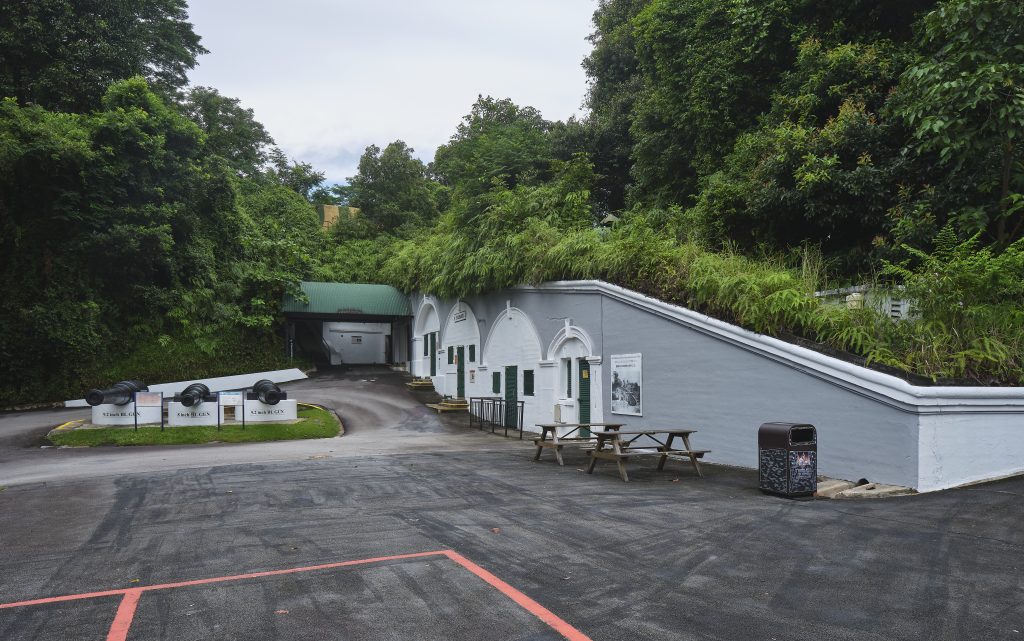
6 Tunnel B Complex
Similar to the gun emplacements in Cluster 1, the gun emplacements in this location were serviced by an underground magazine which is known as “Tunnel B Complex” today. There are two entrances – each of them close to a gun emplacement – leading to the magazine. Shells and cartridges were sent from the magazines to the guns through the hoists.
7 6-inch Breech Loading (BL) Gun Emplacement with Underground Magazine
The “6-inch BL Gun Emplacement” is found above “Tunnel B Complex and was serviced by it. From this location, the personnel in the past had a good view of the sea in front, and of Labrador Battery and the Pasir Panjang area on Singapore mainland behind. This battery was constructed in the late 1880s initially for the Mark IV 9.2-Inch BL gun.
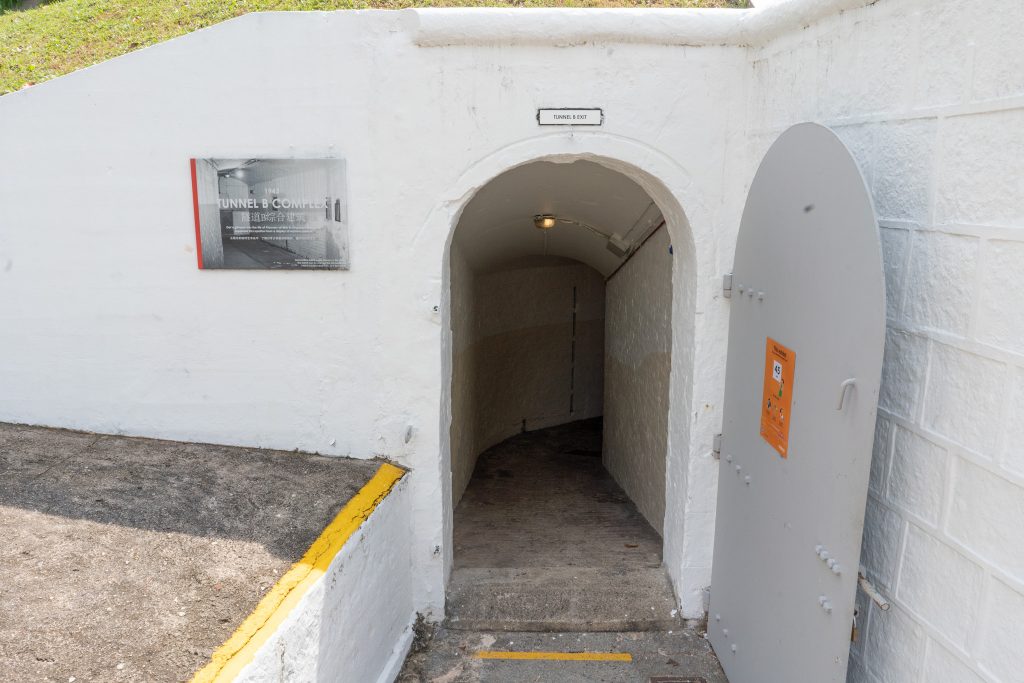
In 1908, the 9.2-Inch Gun was removed and the magazine and emplacement were modified for two 6-Inch QF guns, being moved to this location from Mount Siloso. The updated battery and underground magazine were ready by 1912. During the 1930s, the guns were replaced by Mark VII 6-Inch BL guns and this resulted in more modifications to the mounting structure and in the magazine.
The replicated gun is one of two 6-Inch BL Mark VII Guns located in these emplacements in 1942. The guns in this battery took part in the Battle for Singapore in 1942, traversing to fire landwards on the advancing Japanese troops in Singapore. They also assisted in the destruction of the oil refinery on Pulau Bukom before they were destroyed to prevent both the guns and oil refinery from falling into Japanese hands.
After the war in 1946, Fort Siloso was re-armed with two of these guns brought in from the Labrador Battery and Beting Kusah Battery at Changi. They were later replaced by the newer Mark 24 6-Inch BL Guns which remained active until 1956.
8 Tunnel A Complex
In 1885, Tunnel A Complex consisted of Submarine Mining Post (present day Observation Post), Electric Light (Searchlights) and Engine Room. The powerhouse complex was later upgraded, extended and expanded with more rooms to store ammunition, and a watch duty area to improve the complex’s security.
The underground complex originally housed five Ruston engines made in England, and a diesel store. The engines were later removed and scrapped when the fort was upgraded with oil powered generators. These power generators were vital to the Fort’s operation, providing electricity to operate the fort’s guns, which were too heavy to operate using manpower alone, and powered the searchlights and other fort defences.
An oil store was added when oil replaced coal as an energy source and the two engine rooms were converted into one large room, suitable for oil-fired generators.
A unique and innovative defensive feature of Fort Siloso, specifically in this tunnel, was the electrically fired underwater mines, laid on the seabed at the western entrance to Singapore. Via remote control, these underwater mines would explode and damage an identified enemy vessel.
They were controlled from a Submarine Mining Post which was housed in this underground complex.
In the 1930s, the tunnel complex, which housed the Submarine Mining Post and Engine Room, was extended with the construction of a gun emplacement and a Fire Director Tower. More rooms for ammunition stores and duty watch were added to the Complex.
9 Fire Director Tower, 12-Pounder QF Gun Emplacement with Magazine and Searchlight Posts
The Fire Director Tower formed part of a coast artillery command which directed guns of increased range and accuracy. Its height and location at Siloso Point commanded a clear view of the western entrance to Singapore.
The Fire Director Tower was paired with the 12-Pounder QF Gun Emplacement to take out motorised torpedo boats (MTBs) which were much smaller and faster than most naval ships. MTBs were more useful to attack harbours because they were small, fast, and difficult for big guns to track and sink.
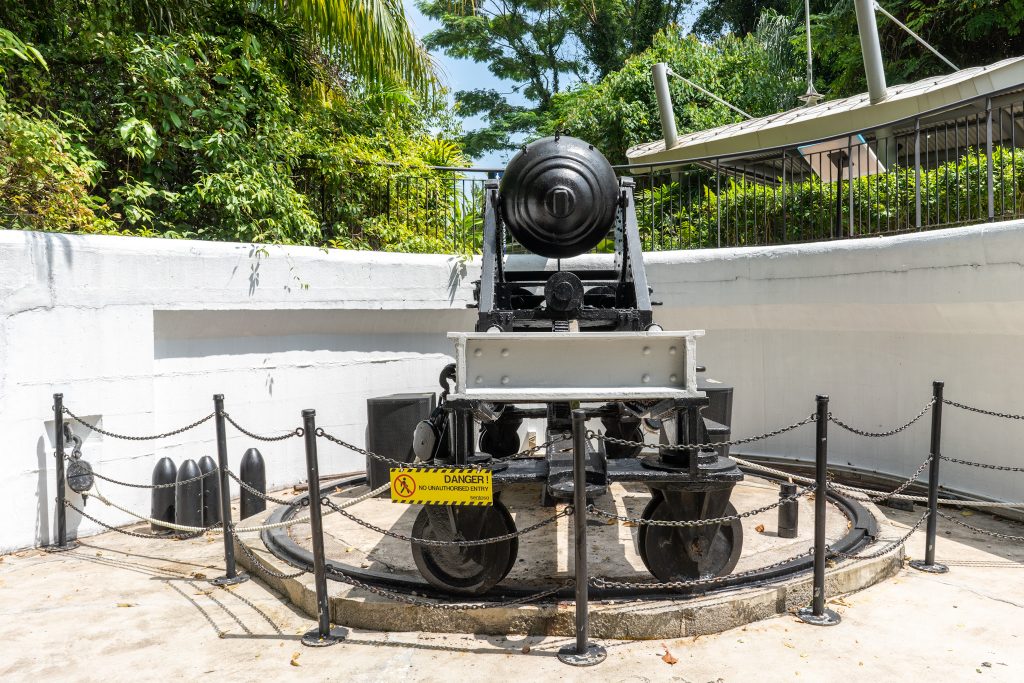
These MTBs would sneak into a harbour to seek out ships anchored there to sink their torpedoes.
In response to the threat of MTBs, new defences such as QF guns were installed at Fort Siloso. These gunswere capable of a much higher rate of fire compared to their larger cousins, and were more effective at engaging fast moving small targets. Fire Director Towers would direct fire on enemy MTBs.
Whilst this gun emplacement at Siloso Point was designed for a twin 6-Pounder gun, only an old 12-Pounder was available when war came to Singapore in 1942. The tower directed the firing of the 12-Pounder QF gun and the searchlights, located on the shore below the gun emplacement.
A 12-Pounder gun, a replica of which is seen here, was mounted in this emplacement in 1941 to reinforce the defences of Fort Siloso.
The addition of search lights helped to detect enemy ships from this new advantage point. They light up the waters around the harbour at night to detect
hostile fast-attack crafts like torpedo boats sneaking in under the cover of darkness.
Other structures
10 64-Pounder RML Gun Emplacement
This was the site of twin Lewis machine guns that were installed during World War II as anti-aircraft armament.
There has always been a gun emplacement in this location since the Fort became operational. Changes were made while the Fort was in operation to
accommodate the changes in guns from 7-inch RML to 12-Pounders to twin Lewis guns during World War II.
Since then, known records have shown that changes over the years are largely to strengthen its foundation or are made to the gun carriages after the Fort was stood down, with the actual emplacement kept largely intact.

11 Sergeants’ Mess and Officers’ Mess
This site features two long buildings – one used to house the barracks and officers’ mess; and the other most likely housed a laundry room, cook house and tailor.
The shorter building was the first known guardroom (also known as Guards’ Bungalow) at Fort Siloso. This Guards’ Bungalow was in use until 1919.
The longer building was known as the Officers’ Mess, which formerly housed a small number of officers of the unit stationed at Fort Siloso.












